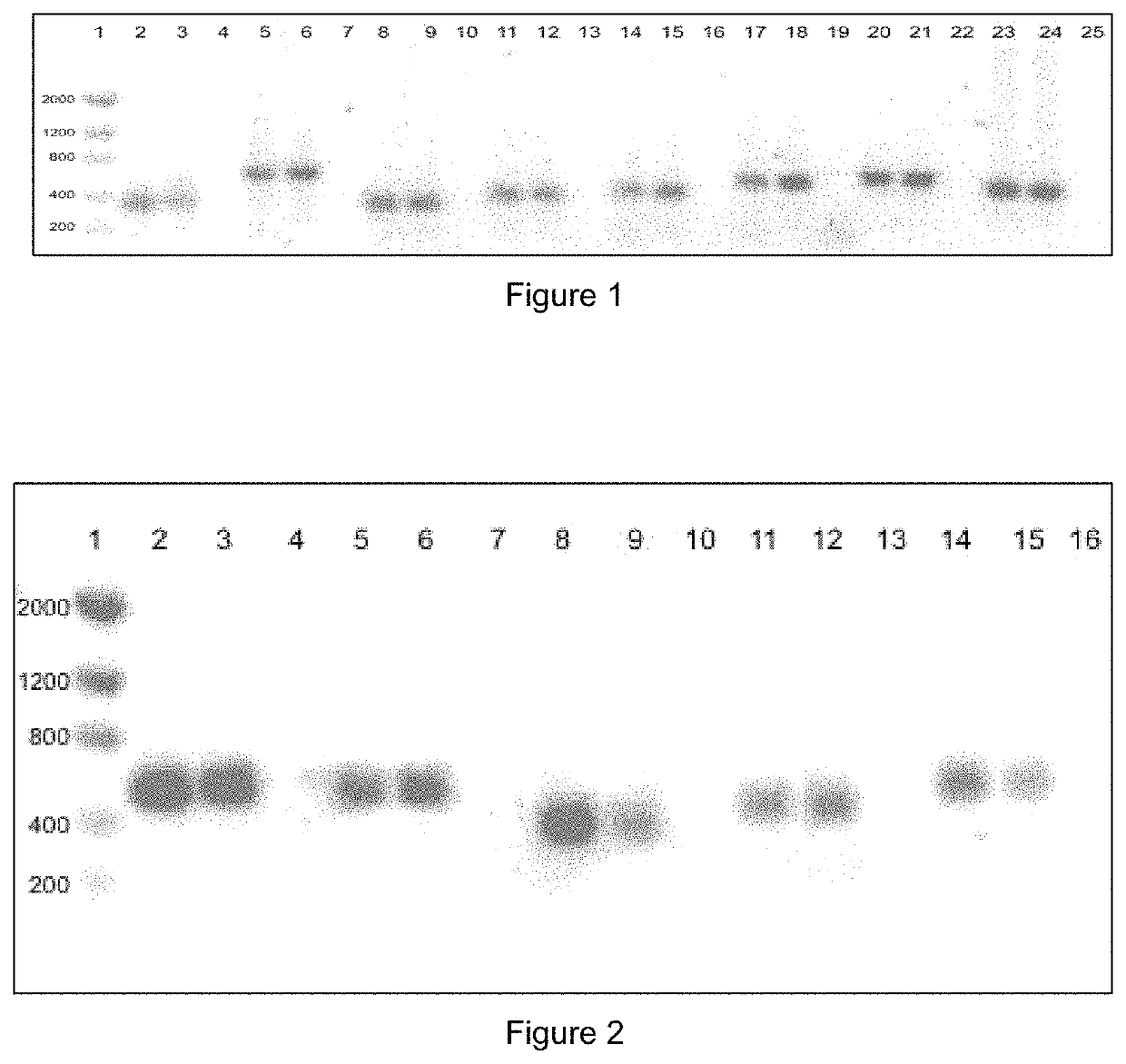Methods and kits for the identification of animals having a greater potential for desirable characteristics, and for the early identification of fat deposits in bovines
a technology of desirable characteristics and kits, which is applied in the field of methods and kits for the identification of animals with a greater potential for desirable characteristics, and the early identification of fat deposits in bovines, can solve the problems of affecting the tenderness of meat, affecting the quality of meat, and unable to fit the ultrasound probe correctly for a more accurate measurement, so as to achieve better carcass quality
- Summary
- Abstract
- Description
- Claims
- Application Information
AI Technical Summary
Benefits of technology
Problems solved by technology
Method used
Image
Examples
example 1
Material Collection and DNA Extraction
[0105]First, the fat thickness of 1171 animals of about 18 months of age was determined by ultrasound. The total mean value of subcutaneous fat thickness measurements was 1.94±0.79 mm, the minimum value obtained being 0.6 mm and the maximum value obtained being 5.4 mm.
[0106]Blood or semen samples were collected from all the animals evaluated for subcutaneous fat thickness and from parents of these animals for DNA extraction. 5 ml blood samples were collected by jugular vein or tail vein puncture into vacuum blood collection tubes containing 50 μl of 15% potassium EDTA (K3) (to prevent clotting) and stored under refrigeration until the DNA extraction process was initiated. Semen samples of some reproductive animals were provided by farms in straws that were kept frozen until the DNA extraction process.
[0107]Extraction was carried out using procedures described by Regitano (2001) or any procedure that enables access to the DNA within the cell nucl...
example 2
Identification of Polymorphisms
[0109]Based on the sequence deposited at the GenBank, 13 pairs of primers were designed flanking the exons that code for the main domains of DDEF1 protein.
[0110]To identify polymorphisms in the DDEF1 gene, the expected breeding values (EBV) for fat thickness were estimated for 113 sires, parents of the 1171 animals.
[0111]The sires were ranked according to the expected breeding value and accuracy and the six with the highest expected breeding value and the highest accuracy and the six with the lowest expected breeding value and the highest accuracy were chosen. DNA from these sires was used in amplification and sequencing reactions to identify polymorphisms in the 13 chosen regions of the DDEF1 gene.
example 3
Primers Design
[0112]It was noted that the size of the DDEF1 gene would make the complete sequencing thereof difficult. Therefore, the main conserved domains of the protein encoded by this gene were identified and the coding regions of said domains were located in the nucleotide sequence of the gene. They are the following: Centaurin Plekstrin Homology domain—PH / centaurin, ankyrin repeats (ANK), Src homology 3 domain—SH3 and ArfGap. The bases that code for these domains were identified in the mRNA. Thereafter, the regions corresponding to such domains were located in the genome sequence.
[0113]Based on this information, it was found that the exons encoding the five conserved domains were very spaced from each other. Thus, a set or sets of exons could not be amplified simultaneously and 13 pairs of primers were designed (one for each exon).
[0114]The primers were designed using Primer3 software and to prevent loss of quality of the exon regions, primers were designed to amplify a small ...
PUM
| Property | Measurement | Unit |
|---|---|---|
| thickness | aaaaa | aaaaa |
| thickness | aaaaa | aaaaa |
| temperature | aaaaa | aaaaa |
Abstract
Description
Claims
Application Information
 Login to View More
Login to View More - R&D
- Intellectual Property
- Life Sciences
- Materials
- Tech Scout
- Unparalleled Data Quality
- Higher Quality Content
- 60% Fewer Hallucinations
Browse by: Latest US Patents, China's latest patents, Technical Efficacy Thesaurus, Application Domain, Technology Topic, Popular Technical Reports.
© 2025 PatSnap. All rights reserved.Legal|Privacy policy|Modern Slavery Act Transparency Statement|Sitemap|About US| Contact US: help@patsnap.com

